The fate of the battleship Vittorio Veneto
Battleships of the Littorio class, the largest representatives fleet Italy, actively participated in the naval battles of World War II, and the battleship Vittorio Veneto became the most productive among them.
Creation of battleships
The history of battleships of the Littorio type began in 1932, when the world arms race was gaining momentum with might and main. The main motivation for the creation of the ships was the start of the construction of new French battleships of the Dunkerque type, which surpassed the old Italian battleships in almost all respects.
The new ships had to meet the necessary requirements, which came from the ideas of the Italian admirals, who considered the Mediterranean Sea to be the main theater of operations. So, the battleships had to have adequate armor, have a high speed and firepower comparable to competitors. Autonomy and cruising range were not of decisive importance.
The construction of the battleships Vittorio Veneto and Littorio began on October 28, 1934, six months after the allocation of funding for the needs of military shipbuilding. In Trieste, the keel of Vittorio Veneto was laid, which was named after the triumphant victory of Italian troops during the First World War near the city of Vittorio in the province of Veneto. The city itself, by the way, was renamed Vittorio Veneto in 1923. At the solemn launching of the ship, which took place three years later, on July 25, 1937, the King of Italy was present, as well as more than 50 people.
Features & Features
The 35 tons displacement of the 000-meter Vittorio Veneto declared in the sketches turned into almost 237 thousand by the end of construction, and its armor scheme turned out to be innovative. Prior to that, it was not used in any foreign fleet. The gap between the 46 mm outer armor plate and the 70 mm inner barrier was filled with concrete. The first blow was taken by a thin armored belt, which destroyed the armor-piercing tip of the projectile and changed its trajectory. As a result, the projectile hit the main armor under unfavorable conditions for penetration. During the tests, hits of 280 mm caliber shells were simulated, and they were considered successful. The total thickness of the main armored deck was 381-45 mm, anti-torpedo protection could withstand the explosion of a charge weighing no more than 162 kg.
Nine 381-mm guns placed in 3 three-gun turrets were ambiguously assessed by experts. In terms of power, they were second only to the guns of the battleships Yamato and Iowa. Armor-piercing projectile Vittorio Veneto weighing 885 kg due to the initial speed of 850 meters per second could penetrate 415 mm of armor from 19 kilometers. Such power was paid for by the low survivability of the guns - only 110-140 shots, with poor accuracy of fire, as well as a low rate of fire of 1,3 rounds per minute. Poor accuracy was the main drawback of the Vittorio Veneto and was the reason for its low combat effectiveness.
Anti-mine artillery consisted of twelve 152-mm guns placed in 4 three-gun turrets. The air defense system was represented by 90-mm long-range guns, as well as 20-mm and 37-mm anti-aircraft guns. Thanks to the power plant with a capacity of 132 hp. Vittorio Veneto could reach 755 knots. The range of his navigation was quite modest.
Battleships of the Littorio class, while being among the best in their class, still had a number of shortcomings. And the career of Vittorio Veneto has several remarkable episodes.
The battle path of Vittorio Veneto
In 1940, the sleek and powerful battleships Vittorio Veneto and Littorio joined the Italian Navy, and on June 10, Italy entered World War II. At the beginning of August 1940, the ships and their crews were not fully combat ready, exhausting exercises were taking place. A host of other circumstances, in particular unsuccessful reconnaissance, postponed an open clash between the British and Italian fleets, despite the advantage of the latter: five battleships against four.
Since the British Admiralty appreciated the threat posed by the Italian battleships, it was decided to strike at the port of Taranto, where the ships were located. On November 11, 1940, at about 23 p.m., British biplanes appeared over the port, taking off from the aircraft carrier Illustrious. The Italians failed to detect them in time, despite the presence of a direction-finding station and air reconnaissance.
The battleships Conte di Cavour, Caio Duilio and the new Littorio were damaged by the attack. Conte di Cavour completely sank. After receiving three torpedo hits, Littorio was grounded, and Vittorio Veneto, despite being attacked by two torpedo bombers, was not damaged. This raid shifted the balance of power in the Mediterranean in favor of the British.
The Italians were eager for revenge, and on November 25, their submarines spotted the exit of English ships from Gibraltar. Leading the squadron, Vittorio Veneto went to sea to intercept the British convoy. Since Admiral Campioni had orders to engage only in case of a clear advantage, the Italians were decisive only until the moment when the British received reinforcements. Therefore, the artillery phase of the battle at Cape Spartivento ended in just 58 minutes, although the exchange of attacks aviation continued for another 4 hours. Nineteen shells fired towards the enemy from the barrels of Vittorio Veneto did not hit the target, and the Italian forces retreated without causing serious damage to the English convoy. The actions of Admiral Campioni were eventually called "too cautious."
In early February 1941, the Italian squadron again went out to intercept British ships after the last shelling of the Ansaldo docks in Genoa with impunity. However, it was not possible to meet the enemy due to inaccurate intelligence data. The failure of the Italians at Cape Matapan also happened due to poor intelligence, this time German.
A plan of operation against British convoys was developed, based on German intelligence data. It turned out that the convoy did not have a serious guard: based on intelligence, the British had only one combat-ready battleship left. The British intelligence worked much better, which on March 27 at 12:20 discovered the Italian squadron led by Vittorio Veneto. This circumstance nullified the factor of surprise, the British managed to put forward battleships, a squadron of cruisers and an aircraft carrier to help the convoy.
On the morning of March 28, the British ships were discovered by Italian cruisers, after which there was a brief exchange of fire, in which neither side achieved an obvious advantage. So, the Italians fired 364 shots without a single hit. Their enemy, due to the long distance, was not at all able to respond with effective fire, and after a while was squeezed into the "pincers".
Vittorio Veneto's guns opened fire on the cruiser Glocester at 10:56. But the battleship's shooting proved to be extremely inaccurate, and the British, putting up a smoke screen, avoided destruction. The battle was short, but the battleship managed to fire 94 shells, without achieving, however, a single hit.
The battleship itself became the number one target for torpedo bombers, which took off from the aircraft carrier Formidable that arrived to the rescue. He began to actively attack from the air, and the Italians began to retreat. At 15:20, a torpedo from a downed British aircraft hit the stern of Vittorio Veneto and disabled the outer port propeller, causing the battleship to temporarily lose speed. The ship took on about 3 tons of water in 500 minutes, began listing to starboard and sinking astern. A few minutes later, after the bombs hit, the steering machines failed. The battleship was able to move, bringing it to 10 knots by 16 hours.
In general, the results of the battle were terrible for Italy. At 19:45, a British torpedo bomber hit the Italian cruiser Pola with a torpedo. The cruisers Zara and Fiume with four destroyers were sent to help the damaged cruiser. In the night battle, the cruisers Pola, Zara, Fiume and two destroyers were lost.
The following months Vittorio Veneto was under repair. Having entered service, he again participated in the interception of convoys. With the same results, however. It was torpedoed by an English submarine on December 14, 1941, and, having taken on board about 3000 tons of water, it again went for repairs. This time the battleship was out of action until June 1942, when the Italian fleet again began to feel an acute shortage of fuel. The participation of Italian battleships, which did not even enter the battle, contributed to the victory of the Axis in the "June Convoy Battle".
The battleships of Italy were relocated to La Spezia, and on June 5, 1943, there was a massive Allied air raid, as a result of which Vittorio Veneto received two bomb hits. The battleship left La Spezia on September 9, 1943, heading first for the island of Sardinia, but then arrived at La Valletta on the island of Malta on September 11 with a raised black pennant - a sign of truce.
Under the terms of the peace treaty signed on February 10, 1947 in Paris between Italy and the victorious countries, Vittorio Veneto was to be transferred to Great Britain, whose government obliged the Italians to dismantle the ship for scrap. So, in February 1947, Vittorio Veneto went on his last trip to La Spezia, where he was finally dismantled in 1955. In total, he made 54 exits to the sea, including 11 military campaigns, covering a total of 17 miles.
The third ship of the Littorio class is the battleship Roma. Never taking an active part in the hostilities, she was sunk by the former allies of Italy during an air raid. You can learn more about the history of this ship in the video from Wargaming!
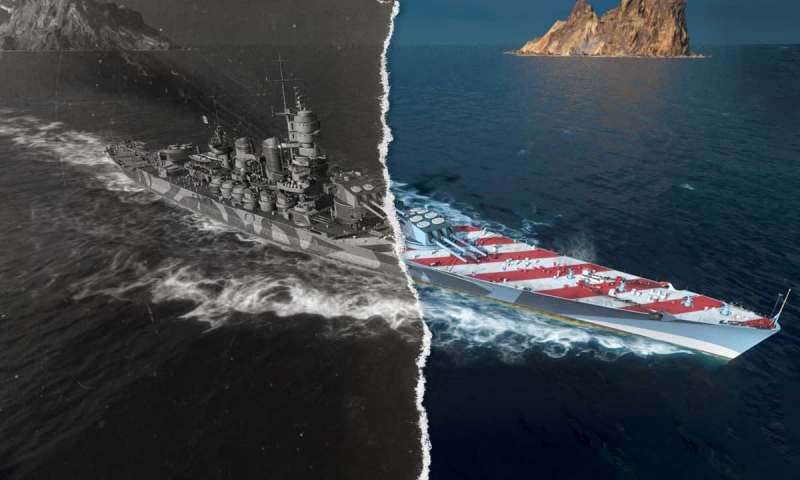
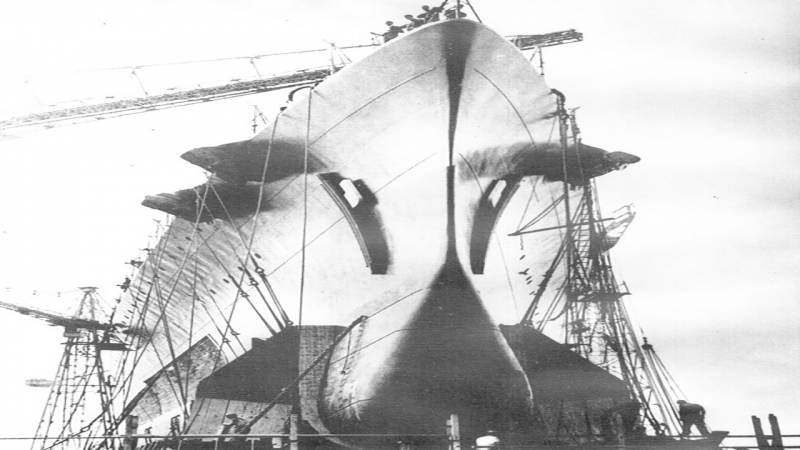
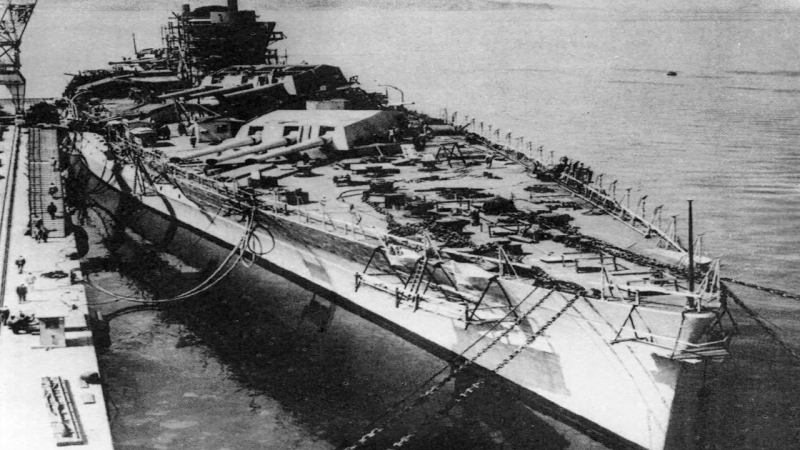
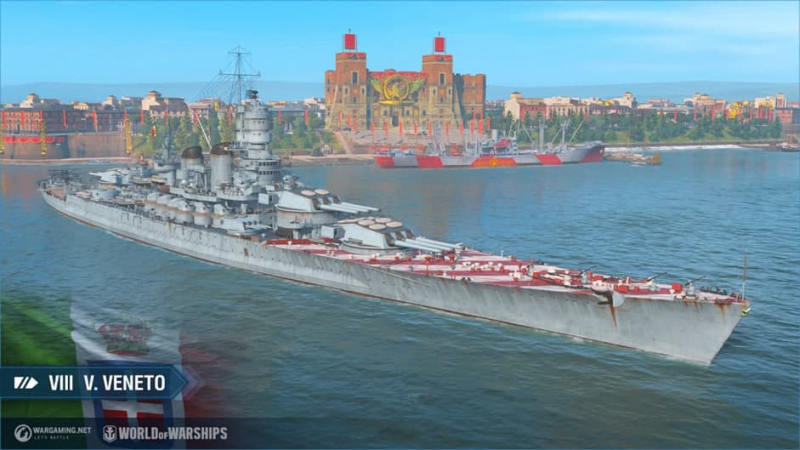
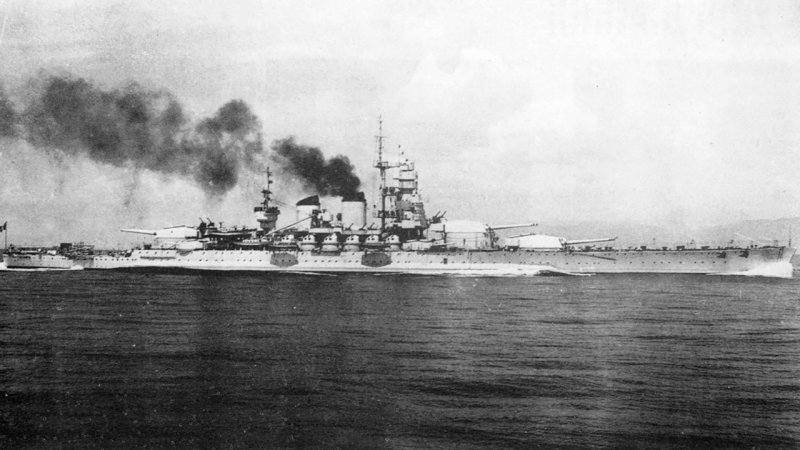
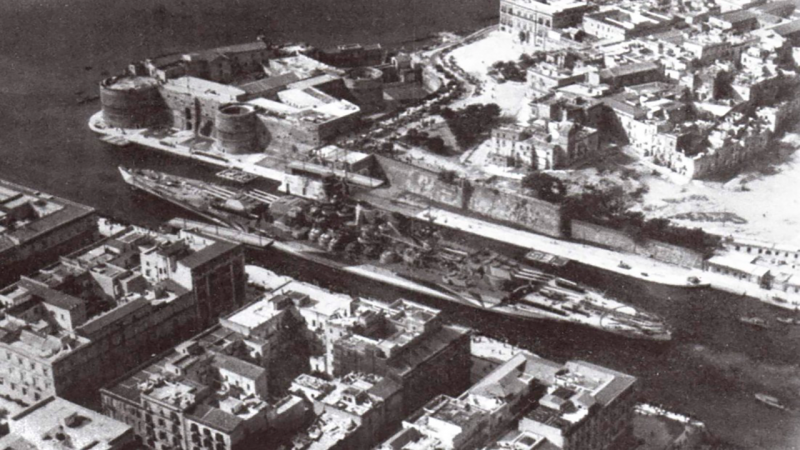

Information